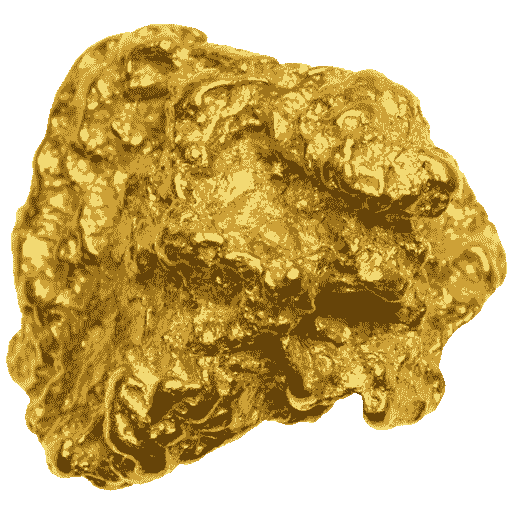Ontario, Canada, is known for its vast mineral resources, and gold is among its most significant commodities. The province’s gold mining history stretches back to the 1800s, attracting prospectors from all over the world. Here, we delve into the rich gold mining heritage of Ontario, exploring its key milestones, famous mines, and contributions to the region’s development.
One of the earliest gold rushes in Ontario occurred in the mid-1800s, drawing prospectors to areas such as the Kirkland Lake and Timmins regions. The discovery of gold sparked a frenzy of activity, with thousands of miners flocking to these areas in search of their fortunes. Several iconic mines emerged during this period, including the Hollinger Mine and the Dome Mine, which became some of the richest gold producers in the province.
Ontario’s gold mining industry experienced another significant boom in the early 20th century, with the discovery of the Red Lake Gold District. This remote region in northwestern Ontario quickly became known for its high-grade gold deposits, attracting major mining companies and leading to the establishment of prosperous mines like the Red Lake Mine. The Red Lake Gold District continues to be a vital gold-producing area in Ontario to this day.
Over the years, advancements in mining technology and exploration techniques have enabled the discovery of new gold deposits in various parts of the province. Ontario’s gold mining industry has evolved into a sophisticated operation, employing state-of-the-art equipment and environmentally conscious practices. Today, mining companies in Ontario continue to extract significant amounts of gold, contributing to the province’s economic growth and providing employment opportunities for local communities.
The gold mining heritage of Ontario is not only reflected in the historical sites and abandoned mines scattered throughout the province but also in the cultural fabric of the region. Several museums and heritage centers, such as the Kirkland Lake Museum of Northern History and the Red Lake Regional Heritage Centre, showcase artifacts, stories, and exhibits that highlight the importance of gold mining in shaping Ontario’s past and present.
Ontario’s Untapped Gold Exploration Potential
Despite Ontario’s rich gold mining history and ongoing operations, there is still considerable untapped potential for gold exploration in the province. Geological studies and prospecting activities have identified numerous underexplored regions that show promising signs of hosting substantial gold deposits. In this article, we explore some of the untapped areas in Ontario that hold exciting prospects for future gold exploration and development.
The Far North region of Ontario, with its vast expanses of untouched wilderness, is one area that offers significant potential for gold exploration. Remote and challenging to access, this region remains largely unexplored. However, preliminary geological surveys and the presence of greenstone belts, known to host gold deposits in other parts of Ontario, suggest the possibility of substantial gold resources waiting to be discovered.
Another area of interest for gold exploration lies in the southern part of the province, particularly around the Lake Superior region. The Michipicoten Greenstone Belt, extending along the eastern shore of Lake Superior, has shown promising signs of gold mineralization. Recent exploration efforts have identified high-grade gold occurrences and geological structures that indicate the potential for further discoveries in the area.
Advancements in exploration techniques, such as airborne geophysical surveys and remote sensing technologies, have opened up new possibilities for identifying gold deposits in previously overlooked areas. These tools, combined with the geological knowledge gained from decades of mining and exploration in Ontario, provide a solid foundation for future gold exploration ventures in the province.
Unlocking Ontario’s untapped gold exploration potential not only offers economic opportunities but also brings challenges related to environmental impact and community engagement. Responsible and sustainable exploration practices, along with consultation with Indigenous communities and other stakeholders, are crucial in ensuring that any future gold exploration activities in Ontario are
conducted in a socially and environmentally responsible manner.
The Future of Gold Mining in Ontario: Sustainability and Innovation
As the gold mining industry in Ontario continues to evolve, sustainability and innovation have become key focus areas for ensuring its long-term viability. Mining companies are increasingly adopting environmentally responsible practices and embracing innovative technologies to reduce their ecological footprint and enhance operational efficiency. In this article, we explore the future of gold mining in Ontario, highlighting the importance of sustainability and the role of innovation in shaping the industry.
Sustainability has become a core principle in the modern mining industry, and Ontario’s gold mining sector is no exception. Mining companies are implementing strategies to minimize their environmental impact, such as using advanced water treatment systems to reduce water usage and implementing stringent waste management practices. Additionally, there is a growing emphasis on land rehabilitation and reclamation efforts, ensuring that mining sites are restored to a productive and environmentally stable state once operations conclude.
Innovation plays a crucial role in advancing sustainable practices in gold mining. Ontario’s mining sector is embracing technological advancements to optimize operations and reduce energy consumption. For instance, the adoption of automated mining equipment and remote-controlled machinery improves worker safety while increasing efficiency. Furthermore, the integration of renewable energy sources, such as solar and wind power, into mining operations helps reduce greenhouse gas emissions and reliance on fossil fuels.
Beyond operational improvements, innovation is also driving advancements in mineral exploration and extraction techniques. Companies are investing in research and development to enhance ore discovery and recovery processes, utilizing advanced geophysical methods and data analytics. These innovations not only improve resource efficiency but also reduce the environmental impact of mining activities.
Collaboration and partnerships between mining companies, research institutions, and government agencies are vital for fostering innovation in the gold mining industry. Ontario boasts a robust ecosystem that encourages collaboration and knowledge sharing. Initiatives like the Centre for Excellence in Mining Innovation (CEMI) and the Northern Ontario Mining Showcase provide platforms for industry players to collaborate, exchange ideas, and develop innovative solutions.
The future of gold mining in Ontario lies in the integration of sustainable practices and innovative technologies. As the industry continues to evolve, stakeholders must prioritize responsible mining practices, community engagement, and environmental stewardship. By embracing sustainability and driving innovation, Ontario’s gold mining sector can thrive while minimizing its ecological footprint and contributing to the socio-economic development of the province.




